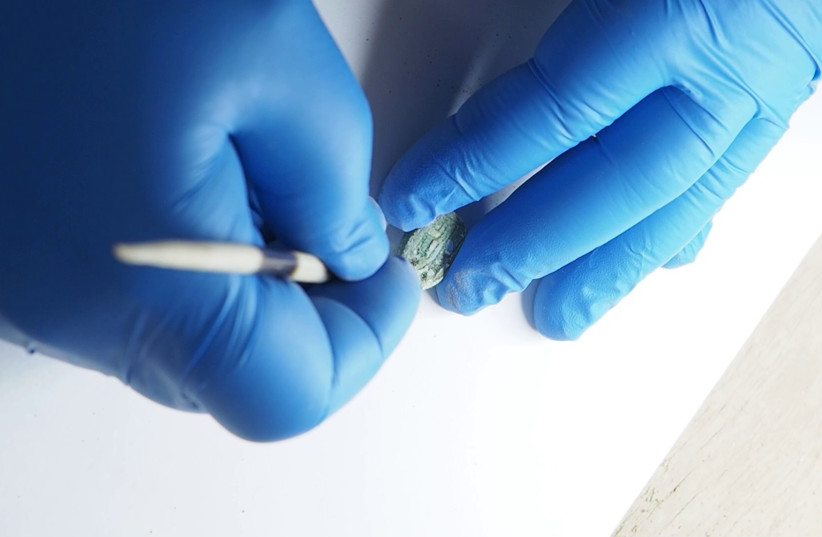A 3,000-year-old scarab - an ancient amulet and impression seal - was discovered during a school field trip to Azor, about seven kilometers southeast of Tel Aviv, the Israel Antiquities Authority (IAA) announced on Wednesday.
Carved into the scarab is the picture of an Egyptian pharaoh, in a scene that represents the bestowal of legitimacy to a ruler.
An eighth-grade class from Rabin Middle School took part in the third annual tour-guide course organized by the IAA. The course enables students to teach Azor locals about archaeological findings.
"We were wandering around when I saw something that looked like a small toy on the ground," leading tour guide Gilad Stern of the IAA's Educational Center said. "An inner voice said to me: 'Pick it up and turn it over.' I was astonished: it was a scarab with a clearly incised scene, the dream of every amateur archaeologist. The pupils were really excited!"

What was on the scarab?
Carved on the flatter side of the scarab is a standing figure is carved that has an elongated head, which appears to represent the crown of the Egyptian pharaoh.
"This scene basically reflects the geopolitical reality that prevailed in the land of Canaan during the Late Bronze Age (1500-1000 BCE), when the local Canaanite rulers lived (and sometimes rebelled) under Egyptian political and cultural hegemony," according to IAA Bronze Age expert Dr. Amir Golani. "Therefore, it is very possible that the seal is indeed from the Late Bronze Age when the local Canaanites were ruled by the Egyptian Empire."
Scarabs are distinctly Egyptian, but there have been hundreds discovered in Israel over time. Some were imported from Egypt while others were imitations of originals made by local artisans under Egyptian influence. The scarab found seems to be one of the imitations of Egyptian ones.
"The find of the scarab, in the framework of a field tour with pupils participating in the tour-guide course, is symbolic in that the pupils were gaining archaeological knowledge and at the same time contributing to our archaeological heritage," IAA director Eli Escusido said. "This cooperation is truly moving, as we are working toward connecting communities with their cultural heritage."
Scarabs are shaped like dung beetles. The ancient Egyptians believed that these beetles were a representation of God because of the way they roll balls of dung two times their size to stow their future offspring in it.
"The scarab was used as a seal and was a symbol of power and status," Golani said. "It may have been placed on a necklace or a ring [and] is made of faience, a silicate material coated with a bluish-green glaze.
"It may have dropped from the hands of an important figure of authority who passed through the area, or it may have been deliberately buried in the ground along with other objects – and after thousands of years, it came to the surface," he posited. "It's difficult to determine the exact original context."
